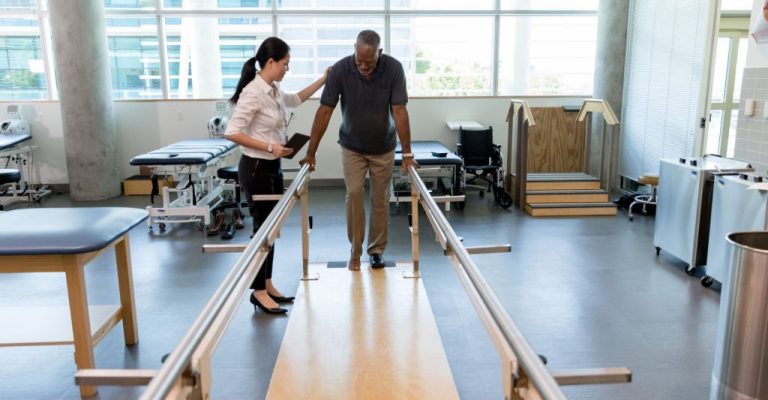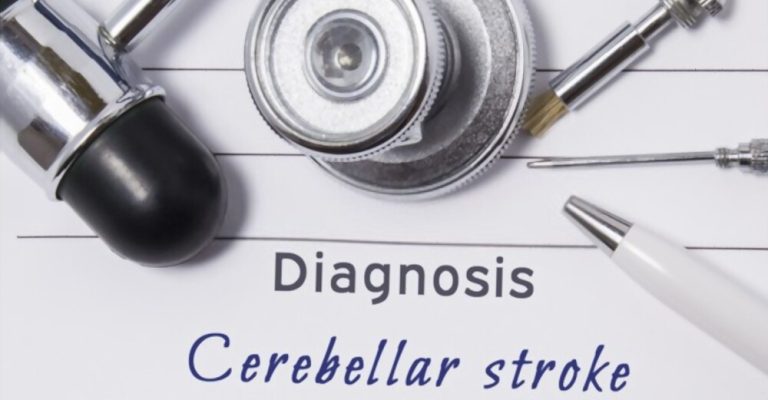
Cerebellar stroke is a type of brain injury that can lead to debilitating symptoms and lasting effects, from severe cognitive impairments to physical challenges. This can be very difficult for those affected as it requires lifestyle changes that ultimately alter the individual’s quality of life.
For family members or carers, this process of understanding how best to help loved ones cope with these shifts in lifestyle and additional demands can be challenging. In the following blog post, we will explore what cerebellar strokes are, their common symptoms, potential long-term effects, and strategies to protect one’s well-being in light of this condition.
Cerebellar strokes are uncommon, making up only 1% to 4% of all strokes. It develops when a cerebellar artery becomes obstructed or breaks, cutting off the brain region from oxygen and nutrients. The cerebellum is a rounded, tiny region in the brain’s posterior. Like the human brain, it is split evenly down the middle, with each lobe having authority over one-half of the body.
The cerebellum is responsible for regulating a wide variety of bodily functions, including equilibrium and ocular movement. As a result, coordination issues are a typical result of brain injuries. The cerebellum receives blood from a number of different arteries, which include:
A cerebellum stroke can be brought on by a blockage or damage to any one of these blood arteries.
A stroke happens when either blocked blood flow or a ruptured vessel prevents oxygen and nutrients from reaching the brain. Cerebellar strokes are those that affect the brain. Stroke manifests itself most obviously through the classic signs of a droopy face, weakened limb, and impaired speech.
In contrast, a cerebellum stroke can cause very distinct symptoms and should always be handled as an emergency. Some of the warning signs of a cerebellum stroke are:
Only about 3% of individuals who go to the ER complaining of dizziness have a cerebellum stroke. Therefore, medical professionals should be urged to perform brain imaging on patients who exhibit symptoms of dizziness.
Since the sickness and headaches associated with cerebellar strokes tend to be more apparent than the brain issues triggered by the stroke, research suggests that when stroke patients seek medical care, they are sometimes mistaken for migraines or the stomach virus.

A higher chance of cerebral stroke is associated with a number of variables. Some examples of these are:
The cerebellum is responsible for a wide range of functions, including voluntary movement coordination, maintaining equilibrium and position on muscle education, and even some verbal characteristics. A cerebellar stroke can affect any or all of these processes.
Most brain outputs are to motor system components, making cerebellar injuries particularly problematic for muscular coordination and balance. Nonetheless, other outcomes could occur. The most prevalent aftereffects of a cerebellum stroke are as follows:
Cerebellar strokes can be challenging to identify due to the lack of specificity in the symptoms that patients experience. On the other hand, physicians employ various tests to ensure they have ruled out every possible cause of the symptoms.
The following are examples of possible evaluations:
Brain hemorrhage or cerebellum injury can be detected with imaging studies. In most cases, magnetic resonance imaging (MRI) is the method of choice because it provides clear images of the cerebellum without damaging the patient’s skull.
There is one thing we can say with absolute certainty: everyone’s stroke and subsequent healing are unique to them. To put it another way: no two strokes are alike. Every person has a unique cerebral architecture, and the effects of a stroke can vary from person to person.
The outlook after a stroke can be affected by several factors, some of which are beyond anyone’s control.
Strokes are medical emergencies that must be treated right away. A multidisciplinary staff in a dedicated stroke center sometimes treats stroke patients.
Factors that may influence treatment include:
The severity of damage to cerebral blood arteries can require the administration of medications for hypertension in the case of a hemorrhagic stroke. A person will cease taking any drugs that thinned their blood, such as anticoagulants. To prevent further hemorrhaging, a practitioner may prescribe vitamin K.
In some cases, physicians may use medicines or fresh frozen plasma to treat coagulopathy. Coagulopathy is a medical term for an issue that may cause abnormal blood coagulation or bleeding. Brain aneurysms can be blocked or sealed off surgically to prevent further bleeding.
Tissue plasminogen activators are a class of drugs that may be used to treat ischemiC stroke. These medicines break up blockages that could otherwise cut off blood supply to the brain. Doctors usually give tPA between three and four and a half hours after signs have appeared.
If a patient is unable to take tPA, anticoagulants or blood-thinning drugs can be used instead. In some cases, surgery is required to unblock vessels and resume normal circulation to the brain.

Individuals who have experienced a cerebellar stroke often require some form of rehabilitation to help them recover from the effects of their condition.
Physical therapy involves improving strength, balance, coordination, and mobility. During physical therapy sessions, an individual can work on a range of motion exercises to reduce stiffness in the affected area. They may also be provided with assistive devices such as walkers or wheelchairs to help improve mobility and independence.
Occupational therapists assist individuals with regaining the ability to perform everyday tasks that they may have become unable to perform after their cerebellar stroke. For example, during occupational therapy sessions, an individual can learn how to use adaptive equipment such as adapted utensils or tools for daily living activities such as dressing or grooming. If their recovery allows, they can also practice essential skills for returning to work or school.
Speech and language therapists are specialized professionals who help individuals enhance their communication capabilities if they have been impaired due to a cerebellar stroke. For instance, an individual may receive guidance on improving their speech fluency or working on swallowing difficulties if they occur due to the stroke. Furthermore, an individual may work on relearning basic language skills or even learn alternative communication strategies if their condition severely impairs them from speaking normally.
Exercise is critical for maintaining overall health after a cerebellar stroke; however, individuals must ensure they are exercising safely so they don’t further aggravate any lingering effects of their condition. A physical therapist can ensure that individuals participate in appropriate exercises while avoiding those which could cause further harm during recovery.
Cognitive retraining specifically addresses any cognitive deficits caused by a cerebellar stroke. This type of rehab usually involves computer-based activities as well as memory exercises aimed at helping an individual remember names, objects, places, etc., all of which can be impacted by the condition. This type of rehab should be done with direct supervision from a trained professional in order for it to reap the most benefit from this type of rehabilitation program.
The time it takes to recover from a stroke is unknown. Stroke healing varies from person to person. The effectiveness of recovery, however, depends on both its speed and its energy. The brain’s ability to change and adapt is significant in the first three months after a stroke.
A lot of patients reach a peak after the three-month point because recovery is the fastest during this period. Unfortunately, many people who suffered a stroke still deal with the same issues they had three months after the event due to inadequate care at home.
A cerebellum stroke, while uncommon, can cause difficulties with walking and other movement abilities. This form of stroke often causes vague symptoms, which might delay diagnosis and therapy. It has a reasonable rehabilitation probability if treatment begins quickly. However, it may take some time to feel better. Possible long-term effects include damage to the body.